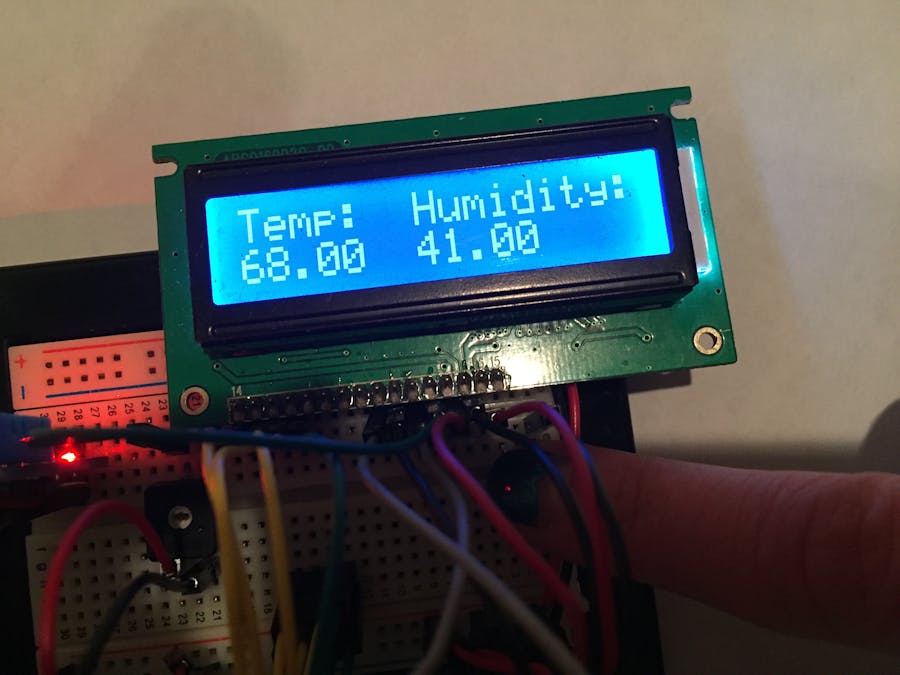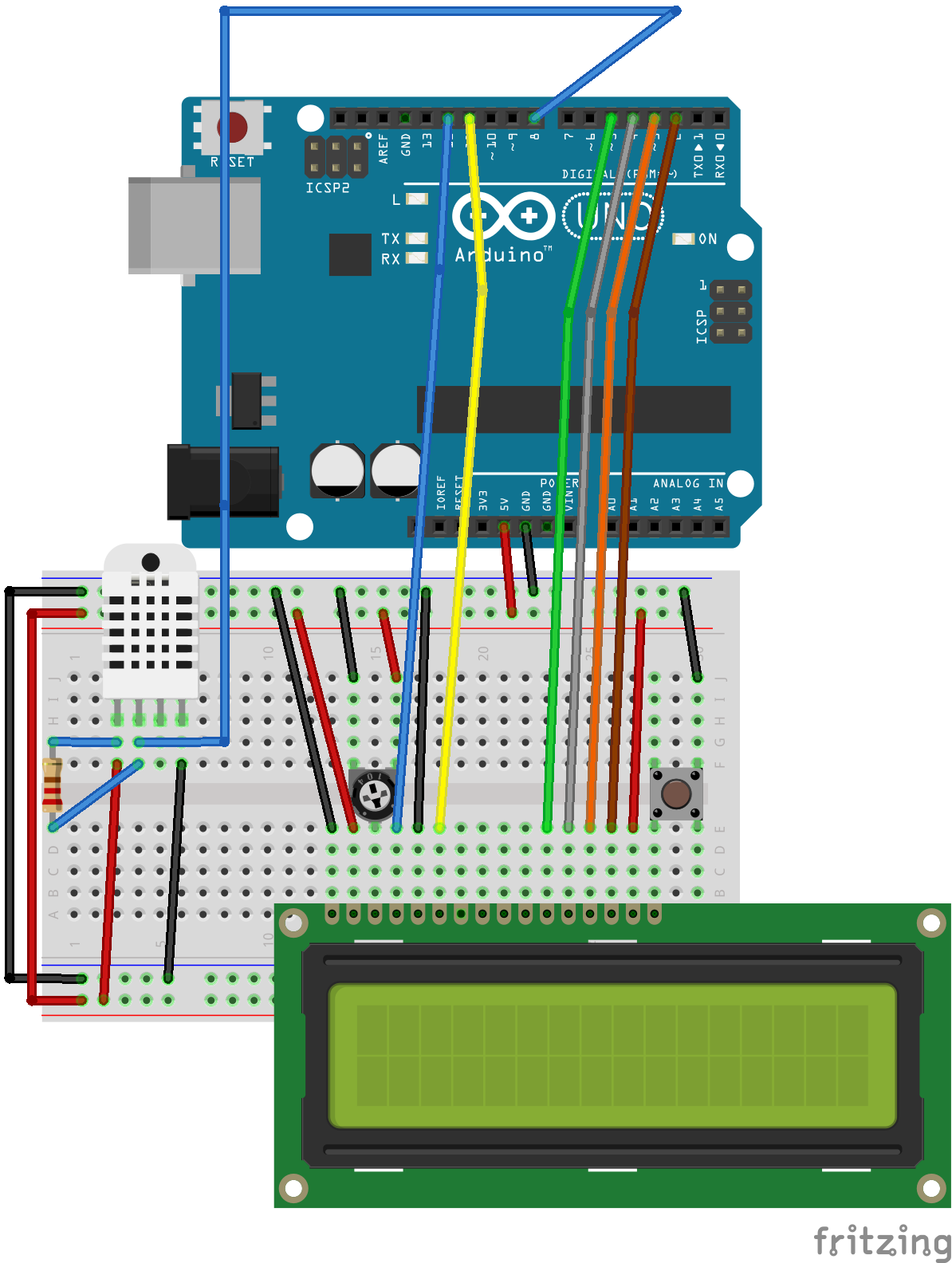I am going to show you how I made a temp and humidity sensor with an Arduino Uno. My end goal is to make one with an Attiny84 and etch a PCB for it. While I do have the parts and pieces to do this, the weather outside is not cooperating. It is hard to etch a board in my garage at less than 10 degrees Fahrenheit. That will be a different instructable for a later date.
Thanks again for taking time to read my project.
To start out, the following is required for this project:
All parts can be purchased at sparkfun or adafruit. Or you can do as I do and salvage as much as you can from old devices.
- Arduino (I used an UNO R3, but 5V any will work)
- Breadboard
- DHT11 temperature and humidity sensor
- 10k ohm potentiometer
- 16x2 LCD screen
- tactile button
- USB A-B cable
- Power Bank
- Jumper Wires
Now it is time to attach all the wires to the devices. Please refer to the Fritzing schematic (please note I do not have jumper wires between the two power rails on the breadboard. you will need them if you use both):
The LCD display I am using was recovered from an old fire alarm annunciator panel. Pins 15 & 16 are located before Pin 1 and instead of Pin 16 being Gnd, it is actually 5v and Pin 15 is Gnd. Please double check your own display and make sure your pins are correct. As my display pinout is most likely different from almost everybody else, I have made the Fritzing schematic with the "standard" display instead of my exact pinout.
Uno
- Gnd --> negative rail on breadboard
- 5v --> positive rail on breadboard
DTH11
- Pin1 --> 5v and 10k ohm resistor
- Pin2 --> Arduino Pin8 and 10k ohm resistor
- Pin3 --> no connection
- Pin4 --> Gnd
- 16x2 LCD Screen
- Pin1 --> Gnd
- Pin2 --> 5v
- Pin3 --> 10k ohm potentiometer wiper pin ( middle pin. the other two pins on the POT go to 5v and Gnd)
- Pin4 --> Arduino Pin12
- Pin5 --> Gnd
- Pin6 --> Arduino Pin11
- Pin7 --> no connection
- Pin8 --> no connection
- Pin9 --> no connection
- Pin10 --> no connection
- Pin11 --> Arduino Pin5
- Pin12 --> Arduino Pin4
- Pin13 --> Arduino Pin3
- Pin14 --> Arduino Pin2
- Pin15 --> 5v
- Pin16 --> Tactile button (other side of tack button goes to Gnd)
CODE
Attached is the code:
I used the DHT library from Adafruit.
https://github.com/adafruit/DHT-sensor-library
FINISHED!
After all of the wiring, plug your power bank to the Arduino.
Your LCD display and DHT11 should start up. Press the tact button and your LCD backlight should light up.
Now you have a portable temperature and humidity sensor with a real time display.
This has helped me determine my draftiest windows in my house and how best to set my house ventilation.
Thanks again for taking the time to read my first project.




_ztBMuBhMHo.jpg?auto=compress%2Cformat&w=48&h=48&fit=fill&bg=ffffff)













_3u05Tpwasz.png?auto=compress%2Cformat&w=40&h=40&fit=fillmax&bg=fff&dpr=2)
Comments